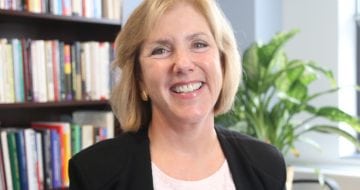At 3:15pm on a warm October afternoon, as I was recovering from a long day of teaching high school English, one of my most engaged students stopped by my classroom. He wanted to share his desire to go to college to study teaching. He spoke of the classes, libraries, and campus culture that he could not wait to encounter. He asked me about my own college experience, and I felt delighted that he was so invested in his future.
A few months later, this same student returned to my classroom after school. Yet this time he was anxious that he would not be able to pay for college.
At this Title I high school in Miami, financial barriers made it hard for some of my students to imagine a college-going future. Many of my students went on to attend community college, if they pursued college at all.
With this experience in mind, I paid close attention during President Obama’s 2016 State of the Union Address, when he doubled down on his idea to make community college free of tuition.
When Obama first proposed “Free Community College,” he charged Congress with supporting a bill, H.R. 2962 or the America’s College Promise Act. The bill would have provided grants to students in any state that agreed to make community college tuition free. While the bill so far has 81 co-sponsors, its chances of passage remain slim due to Republican opposition. On their own, Tennessee, Oregon, Minnesota, Delaware, and Washington have developed their own “Promise” Plans, which make community college free for all students who meet a pre-determined set of criteria.
In the state plans, such as Tennessee Promise, the federal and state governments both contribute to covering students’ community college tuition in what is known as a “last dollar” scholarship. The federal government distributes Pell Grants to the student, as is typically the case, to the extent that the student qualifies for them. Then the state government foots the rest of the tuition bill. Since the federal government helps cover much of students’ tuition through the pre-existing Pell Grants, the program only cost Tennessee $1,020 per student.
In Tennessee, the plan has shown promising results. In fall 2015, 16,291 students enrolled in Tennessee Promise. A study by professors at the University of Tennessee found that students who participated in the program were more likely to enroll directly in college after high school. The increased college enrollment was particularly evident for low-income students.
Currently, 34.1% of high school graduates in the United States do not enroll in some form of college in the fall after graduating; many of them refrain from enrolling due to affordability issues or the perception of affordability issues caused by high sticker prices. The status quo, that 9% of the poorest students graduate from a 4-year institution before the age of 25, is unacceptable. According to the Obama administration, its community college plan, if adopted by all states, would help out 9 million students, who would save on average $3,800 each year. For these reasons, I am excited about the prospect of free community college.
I wonder, however, about the unintended consequences of free community college, in terms of the long-term effects on educational and workforce outcomes. Free community college may improve college access, but will it improve college success, let alone long-term financial success?
As policymakers consider proposals, I have six questions about free community college and its ramifications for economically disadvantaged students:
- Should government really cover the tuition of well-off students, which, in the context of limited funding, could reduce the slice of money available for the poorest students?
- Will “Free Community College” push low-income, high performing students away from 4-year institutions and towards community college, thereby limiting their access to opportunity? Or will it lead to higher 2-year college completion rates and higher transfer rates to 4-year colleges?
- Will “Free Community College” contribute to a two-tiered system where poor students are incentivized to attend more under-resourced, 2-year institutions, while higher income students become the sole inhabitants of better-resourced, more elite, 4-year colleges? Or will free community college lead to more socio-economic integration on community college campuses with middle and upper class students taking advantage of free tuition?
- In conjunction with free community college, will states spend sufficiently on the basic needs of students for housing, transportation, books, and other expenses such as childcare and mental health services?
- Given that only 39% of community college students graduate with an Associate’s Degree in 6 years, will “Free Community College” spur institutional reforms that improve college preparedness, retention, and graduation rates?
- Will “Free Community College” create pressure to improve job market outcomes for economically disadvantaged students, who continue to struggle in the workforce despite higher educational attainment?
As more students from historically disadvantaged groups enter our public school system, it is important that policymakers ask questions and take action to guarantee that the needs of students, like the ones I taught, are truly met.
Zachary Malter is a Policy Research Assistant at the American Youth Policy Forum.







